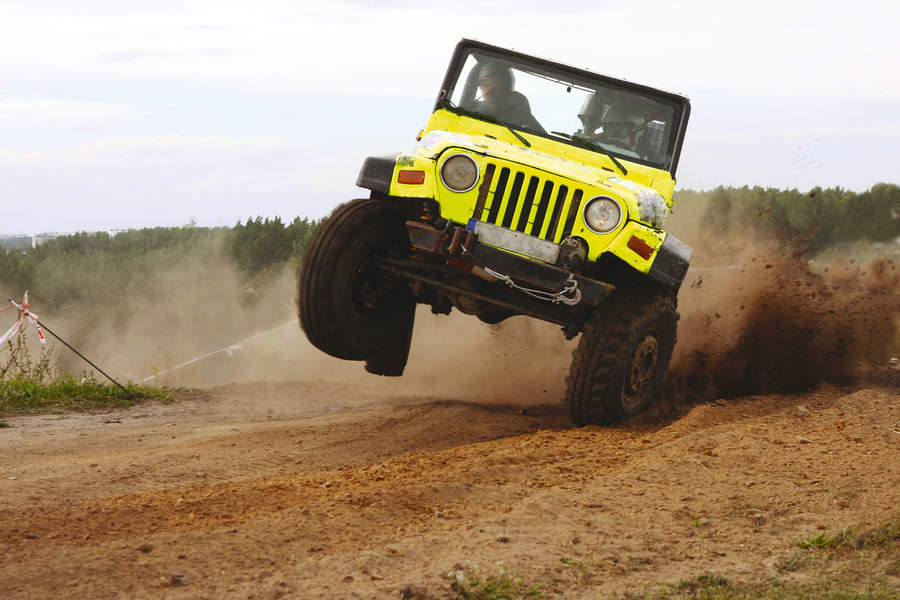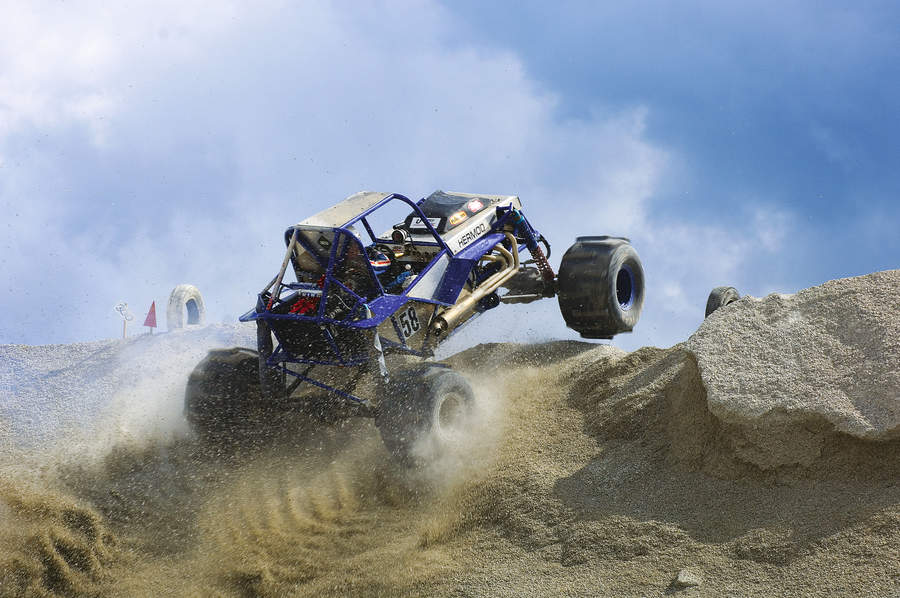Extreme off-road vehicles
by Ailsa Harvey · 22/09/2019
How can four-wheel drives conquer any terrain?

Traditionally, cars are two-wheel drive. This means that only two wheels receive power from the engine at the same time — either the front or back set — and they are responsible for moving the car. They’re suitable for roads and highways as they are lightweight and simple to construct, but they lack the ability to grip tougher terrain as two of the wheels are powerless and will get stuck on obstacles or slip
on the ground.
The invention of the four-wheel drive (4WD) in the late 1800s pushed boundaries and successfully revolutionised the way we drive, letting us break free from the restriction of roads and giving us the freedom to roam almost any terrain. Modern 4WDs are designed to cross deserts, plough through snow and plunge into rivers, so we can explore our planet further than ever before.
A successful off -road car is built on a robust and lightweight frame accompanied by large tyres with deep treads and tough sidewalls. Often, these tough vehicles are able to navigate difficult terrain as they’ve been built with an extra, very low gear — nicknamed the ‘granny’ gear — in addition to their long suspension that allows the car to almost bounce across rocks. These cars are suitable for on the road and off the road, but for something more heavy-duty, all-terrain vehicles (ATVs) stand out as the
unrivalled champion of tough terrain.
4WD cars are restricted due to the need to keep them as a high-performance vehicle on the road. This is where ATVs are able to excel in handling off -road. Also known as quad bikes or four-wheelers, they are incredibly versatile, small vehicles that operate like motorcycles and travel on large, low-pressure tyres and are equipped with handlebars for steering.
Formula off-road

Formula Off -Road is a type of motor sport that combines precision driving, speed, steep hills, rocks, and water. The sport originated in Iceland but it’s now popular in many Nordic countries and the US.
The events take place in areas that are closed with no traffic — often rock mines or craters as they offer an appropriately rocky terrain. There are tracks marked with sticks or flags and penalties for stopping, reversing the vehicle and driving a wheel on the markings of the track.
The drivers are protected with a roll cage, full-face helmet, neck support, five-point harness, flame-resistant clothing, shoes, gloves, and even arm restraints to prevent them from falling out of the vehicle. Each driver has a small team who prepare the vehicle and repair it throughout the competition.
This article was originally published in How It Works issue 103, written by Charlie Evans
For more science and technology articles, pick up the latest copy of How It Works from all good retailers or from our website now. If you have a tablet or smartphone, you can also download the digital version onto your iOS or Android device. To make sure you never miss an issue of How It Works magazine, subscribe today!




